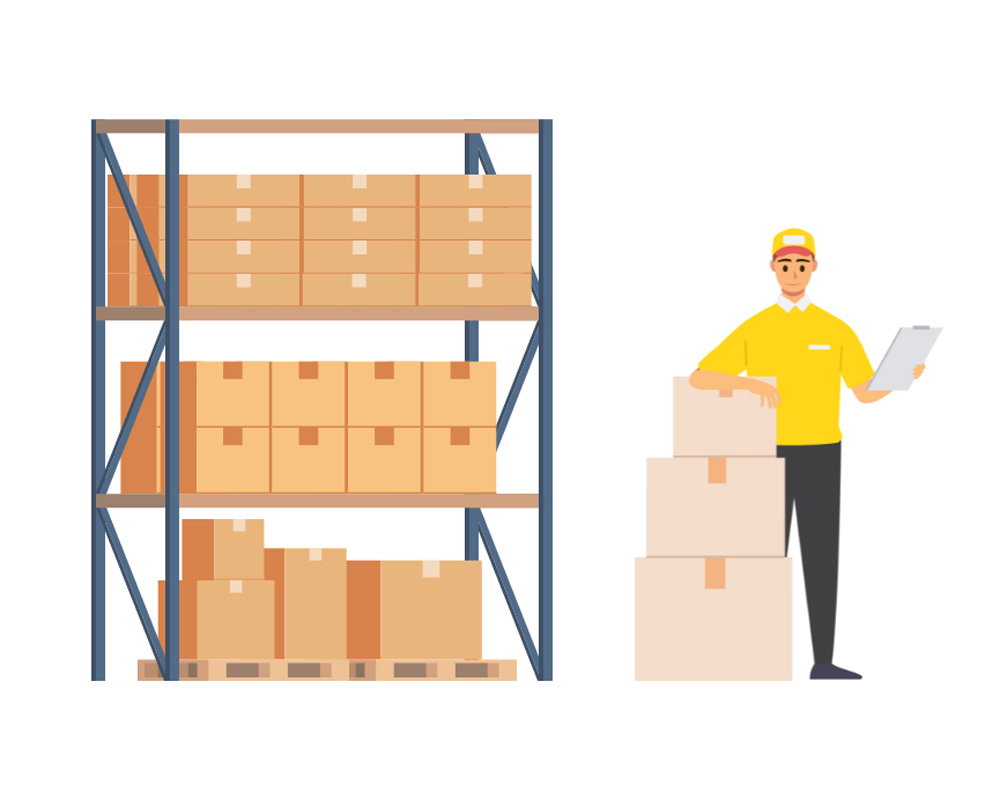Order Picking
Order picking is the compilation of goods based on orders from a complete assortment. This can take place for a customer order or a production order.
The employee who carries out the order picking is also called a picker. In some cases, this task is carried out by machines. The order itself is transferred to a picker in the form of a printed or electronic picking list.
The goods can be taken from the warehouse, the picking warehouse or from manufacturing. Thus, to a certain degree, the warehousing strategy also determines the type of order picking, since, during the removal, different consumption-based storage sequences are used. The following warehousing strategies are most commonly used in practice: FIFO (First In, First Out), FEFO (First Expired, First Out), LIFO (Last In, First Out), HIFO (Highest In, First Out), LOFO (Lowest In, First Out), and chaotic warehousing.
Goals of order picking
The main goal of order picking is always to shorten the duration. In this context, especially relevant points are the trip time (trip of the picker to and from the storage location, the picking time (duration from article picking to compilation) and dead time (duration of all small activities). Other goals are the optimisation of the trips, the reduction of incorrect picking and secure processes. In general, the following applies: the faster and easier the goods can be compiled, the lower the costs are.

Order picking systems
- Goods to person: dynamic and automated
The picker is at his fixed picking location, to which the goods are transported with conveyor technology. He removes the required amount of goods. Then, the containers (empty or filled with remaining quantities) are transported back to their storage place. The system scores points with short walking distances, less physical strain and, at the same time, high picking performance and fewer errors.
- Person to goods: static and manual
In this case, the picker goes to the corresponding storage place to remove the goods. Usually, no auxiliary means are used. The system is suited for smaller order volumes and goods with a low weight.
Order picking methods/types of order picking
The following examples show the different order picking types based on this case: Customer order 1 contains goods A and goods B; customer order 2 contains goods A and goods B.
In one-step order picking, each customer order is compiled separately; i.e. order picking is carried out based on the order.
- Order-based, parallel order picking: Two customer orders from customer 1 and customer 2 are completed separately. Additionally, both customer orders are respectively subdivided into goods A and goods B. One picker gets goods A for customer 1; another picker gets goods B for customer 1. The same happens for customer 2. Thus, four pickers are used.
- Order-based, serial order picking: Two customer orders from customer 1 and customer 2 are completed separately by one picker each. Both pickers first pick up goods A and then goods B for their respective customer.
In the two-level variant, pickers remove the entire article quantity for multiple orders at the same time, i.e. carry out serial order picking.
- Serial, parallel order picking: Two different pickers simultaneously remove the goods quantities of goods A and B for customers 1 and 2. One picker removes goods A, another picker goods B. After compilation, the goods are distributed in accordance with the orders for customers 1 and 2.
Order picking methods
Order picking with picking lists (Pick by Paper) is by now replaced by other, usually electronic, methods. With these mobile data entry (MDE) methods, mobile data is captured and transmitted via a hardware device, regardless of the location. To that end, so-called MDE devices are used, which are similar to common tablets/mobile phones.
One of these methods is, for example, Pick by Scan. Here, the goods are captured via barcode scanning by an MDE device that also has a keyboard and touch display. The MDE method is also used for Pick by Voice; however, in this case, information is transmitted via headphones and voice input. With the Pick by Light method, light signals at the relevant storage place indicate which items need to be pulled for the order.
The CarLo software solutions can support forwarding companies in the area of warehousing. CarLo inSTORE is a warehouse management software, CarLo inHUB a cross docking software. Both work with MDE devices and scanning technology.